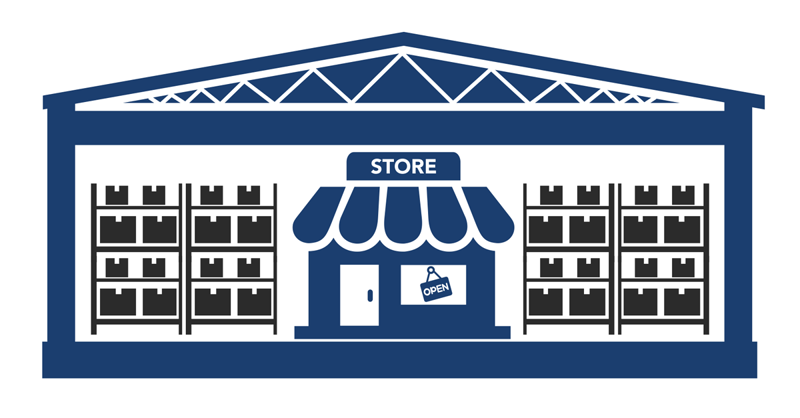Omnichannel shipping is one of the most talked-about topics in today’s retail and eCommerce logistics world. We know we’ve talked about omnichannel shipping a lot. And with good reason.
eCommerce sales are booming. In 2020, eMarketer predicts eCommerce sales worldwide will surpass $4 trillion and total more than 16 percent of all retail sales. This has led to businesses having to focus on how to handle the growing number of orders so they can manage both customer expectations and costs when shipping all the parcels containing those orders.
One of the most versatile omnichannel shipping strategies gaining traction is the warehouse-in-a-warehouse concept.
Pick, pack, parcel with warehouse-in-a-warehouse
Warehouse-in-a-warehouse pick, pack, parcel capabilities enable merchants to dedicate an area of existing warehouse space to fulfill individual eCommerce orders: picking the order, packing the carton, and managing the parcel shipment. This requires close integration of warehouse management software (WMS) and parcel management software platforms capable of keeping track of multi-enterprise activities such as inventory, order management, transportation management, and accounting systems.
“The beauty of this warehouse-in-a-warehouse strategy is that it can work for a multitude of shippers who are looking to either add parcel shipping to their mix or continue to do it at a cost and time savings,” says Martin Hespeler, Vice President of Sales – Americas at Microlistics, a leading warehouse management system provider. “A retailer opening an online storefront, a manufacturer adding drop-shipping to consumers, or even a 3PL provider investing in eCommerce fulfillment can all overcome the significant adjustments to warehouse operations needed to take advantage of an expanding market.”
A look at the scenarios for a warehouse-in-a-warehouse strategy
For example, warehouse-in-a-warehouse is used by a pet supplies retailer located in several Western and Midwestern states. Pick, pack, parcel enables them to fulfill orders from a supplier’s warehouse located in Massachusetts or from their own warehouse. Warehouse-in-a-warehouse provides the merchant with broader visibility to inventory, thereby reducing stock outages, transportation costs, and delivery time to consumers located closer to inventory sources.
Meanwhile, a manufacturer or distributor that is lending a helping hand to its eCommerce and retail customers can also employ the same type of warehouse-in-a-warehouse strategy to power direct-to-consumer or direct-to-store drop-shipping.
Pick, pack, parcel can also be implemented by 3PLs looking to expand their eCommerce fulfillment abilities by utilizing the right technology that can properly invoice for smaller order fulfillments, something they are often not well set up to do.
In the end, to know if you can benefit from a pick, pack, parcel solution (such as those offered by Microlistics, in partnership with Pierbridge) ask yourself the following questions:
1. Does my current WMS provide support for global, regional, and local parcel carrier services, LTL vs. parcel rate shopping, and the ability to ship from any locations and accounts?
2. Does my current carrier-provided or third-party multi-carrier shipping software support multi-enterprise shipping management?
3. Do I have the time and budget to deploy a capital and resource intensive, on-premise eCommerce fulfillment solution?
If you answer "no" to any of these questions, then a SaaS-based warehouse-in-a-warehouse pick, pack, parcel solution could allow you to significantly expand your eCommerce business, while minimizing your cost of ownership.
